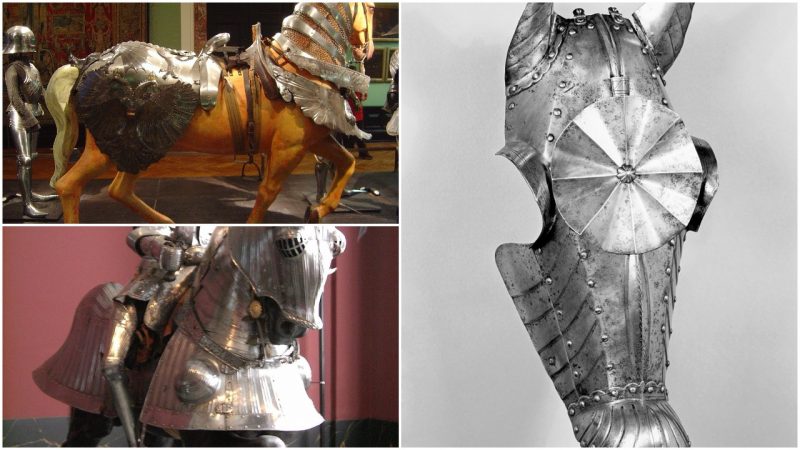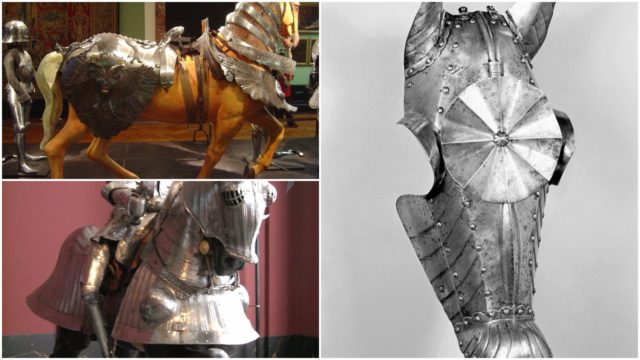
Barding (also spelled bard or barb) is armour for horses. During the late Middle Ages as armour protection for knights became more effective, their mounts became targets. This tactic was effective for theScots at the Battle of Bannockburn in the 14th century when horses were killed by the infantry, and for the English at the Battle of Crécy in the same century where archers shot horses and heavy infantry killed the French knights after they were dismounted. Barding developed as a response to such events.
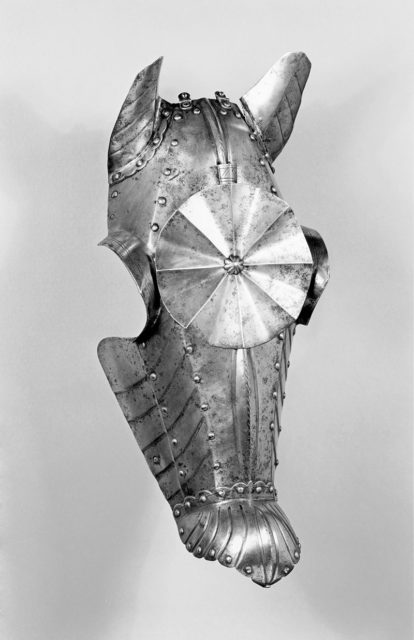
Surviving period examples of barding are rare; however, complete sets are on display at the Philadelphia Museum of Art, Wallace Collection in London, the Royal Armouries in Leeds, and the Metropolitan Museum of Art in New York.
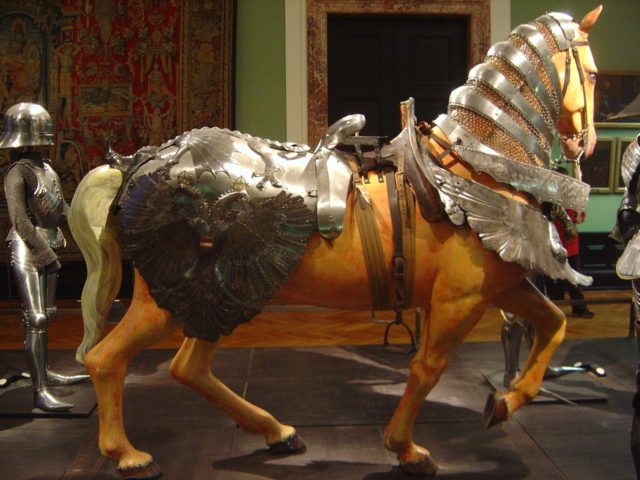
The chanfron was designed to protect the horse’s face. Sometimes this included hinged cheek plates. A decorative feature common to many chanfrons is a rondel with a small spike.
The chanfron was known as early as ancient Greece, but vanished from use in Europe until the twelfth century when metal plates replaced boiled leather as protection for war horses. The basic design of the chanfron remained stable until it became obsolete in the seventeenth century, although late examples are often notable for engraved decoration. A chanfron extended from the horse’s ears to its muzzle. Flanges often covered the eyes. In an open chanfron, the eyes received no protection. Hinged extensions to cover the jowls were commonly used for jousting tournaments.
The enigmatic Torrs pony-cap from Scotland appears to be a bronze chanfron from about the 2nd century BC, perhaps later fitted with the bronze horns found with it.
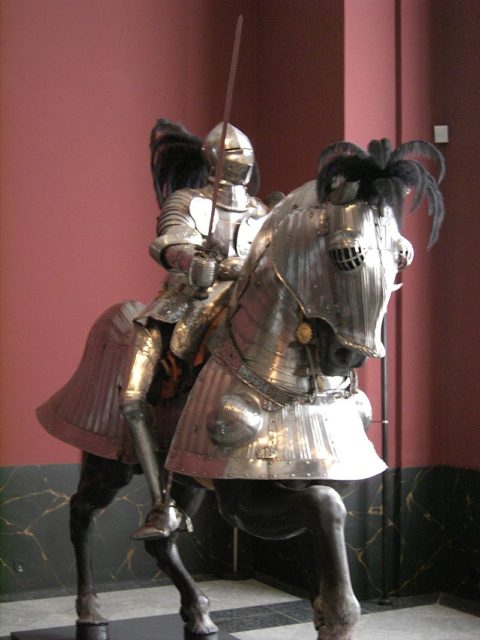
The flanchards, used to protect the flank, attached to the side of the saddle, then around the front or rear of the horse and back to the saddle again. These appear to have been metal plates riveted to leather or in some cases cuir bouilli armour (which is boiled or treated leather sealed with beeswax or the like).
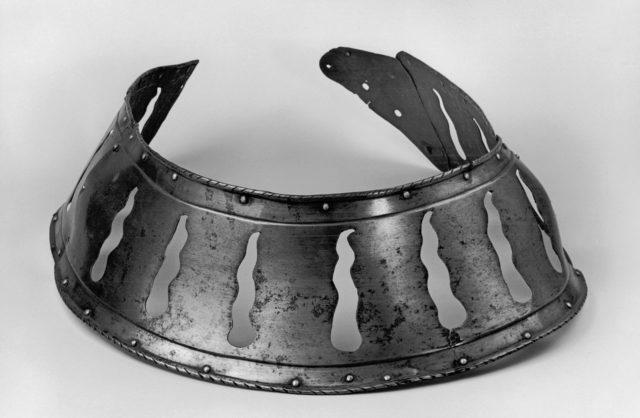
The peytral was designed to protect the chest of the horse, while the croupiere protected the rear. It sometimes stretched as far back as the saddle.
